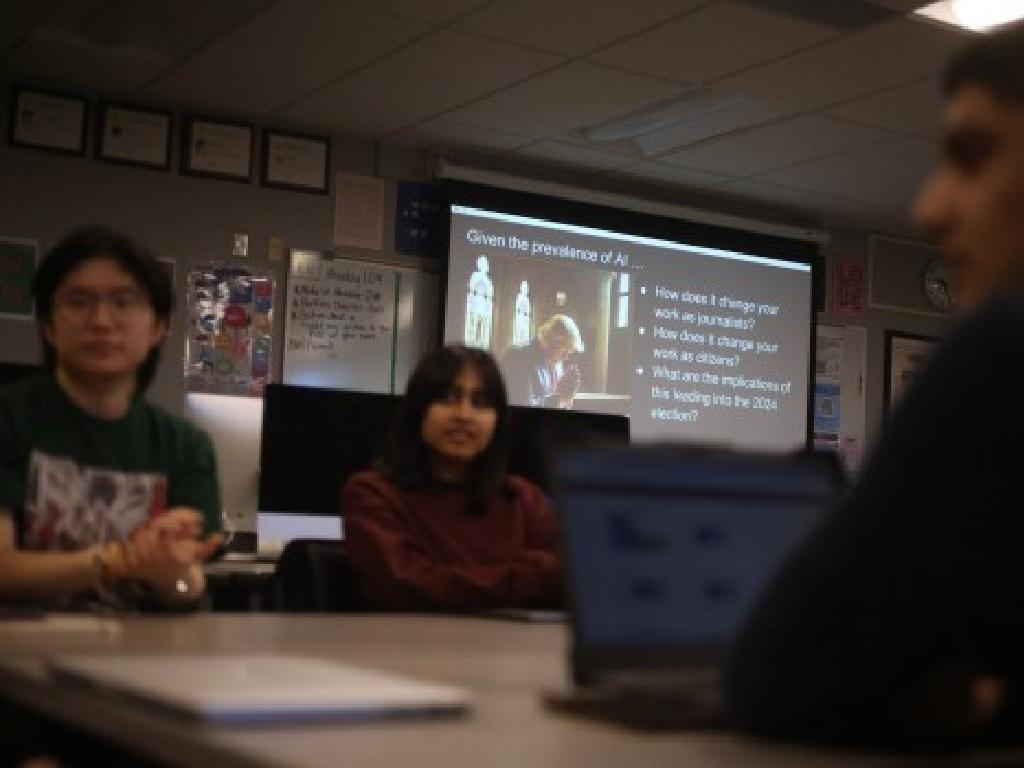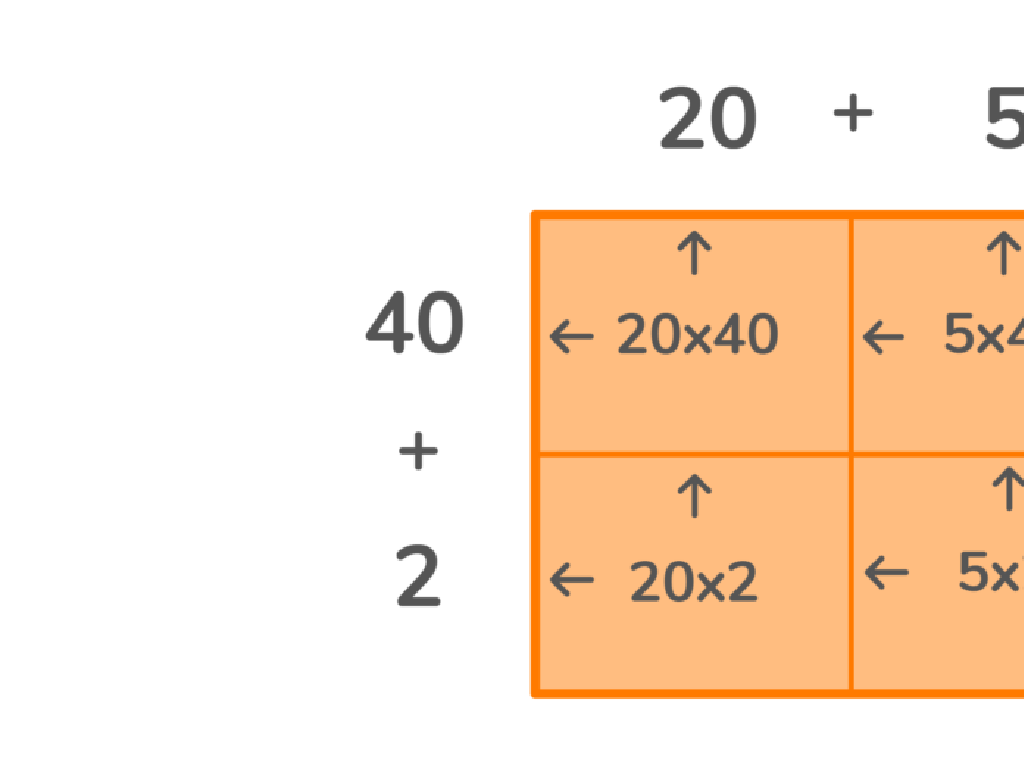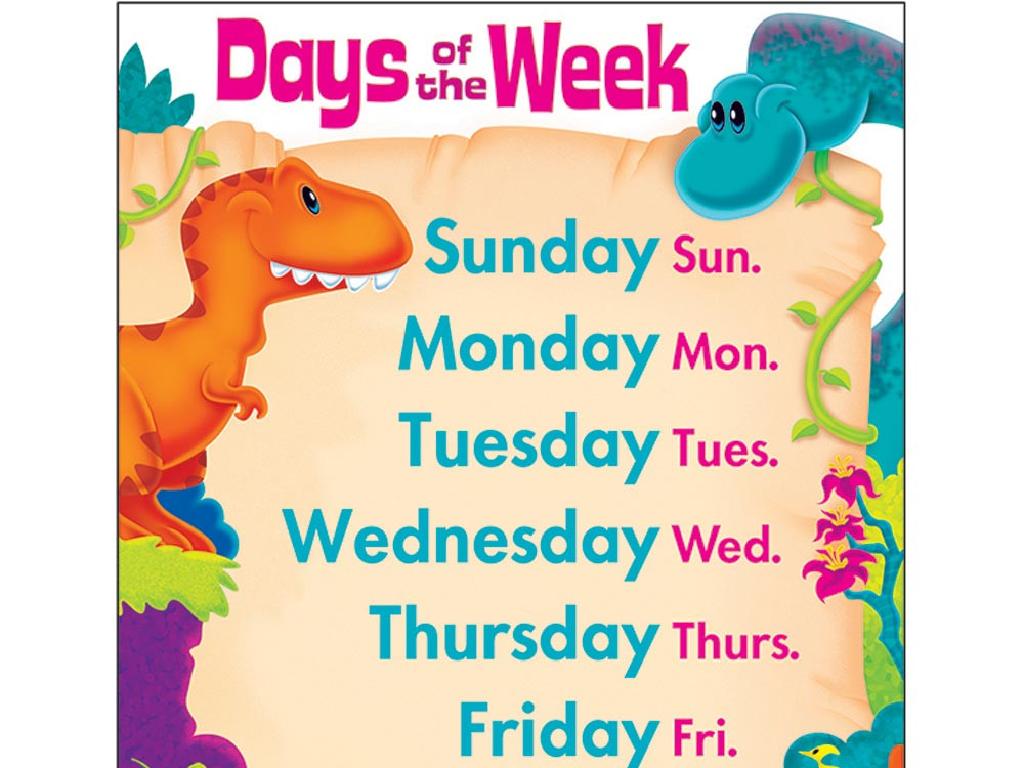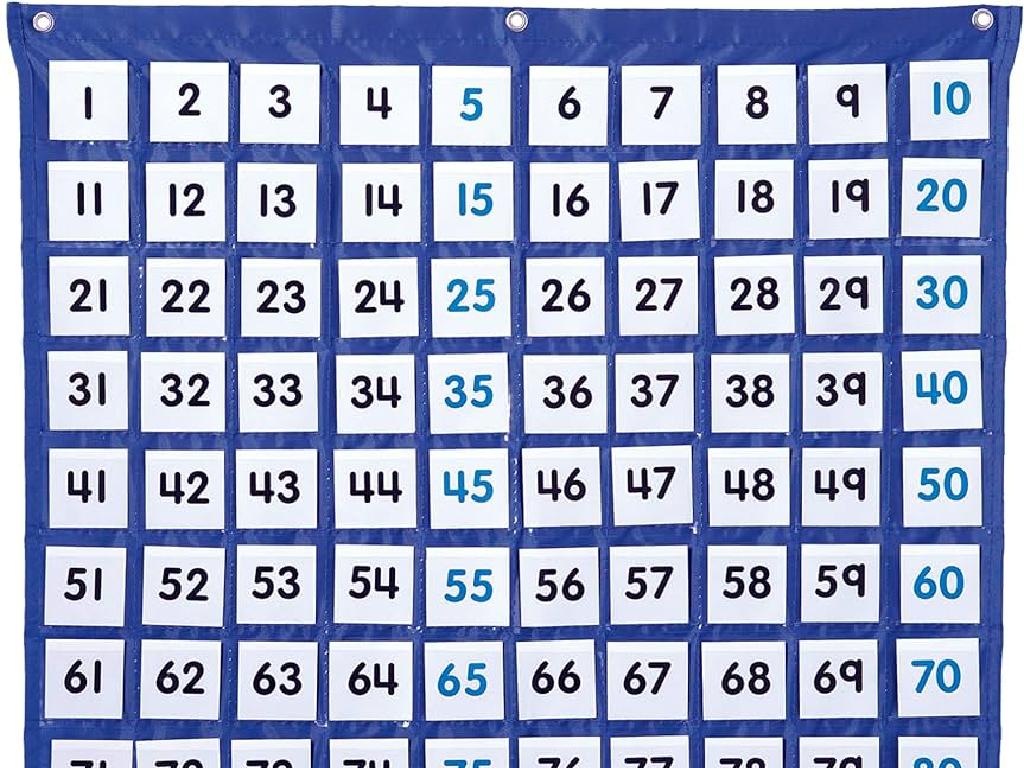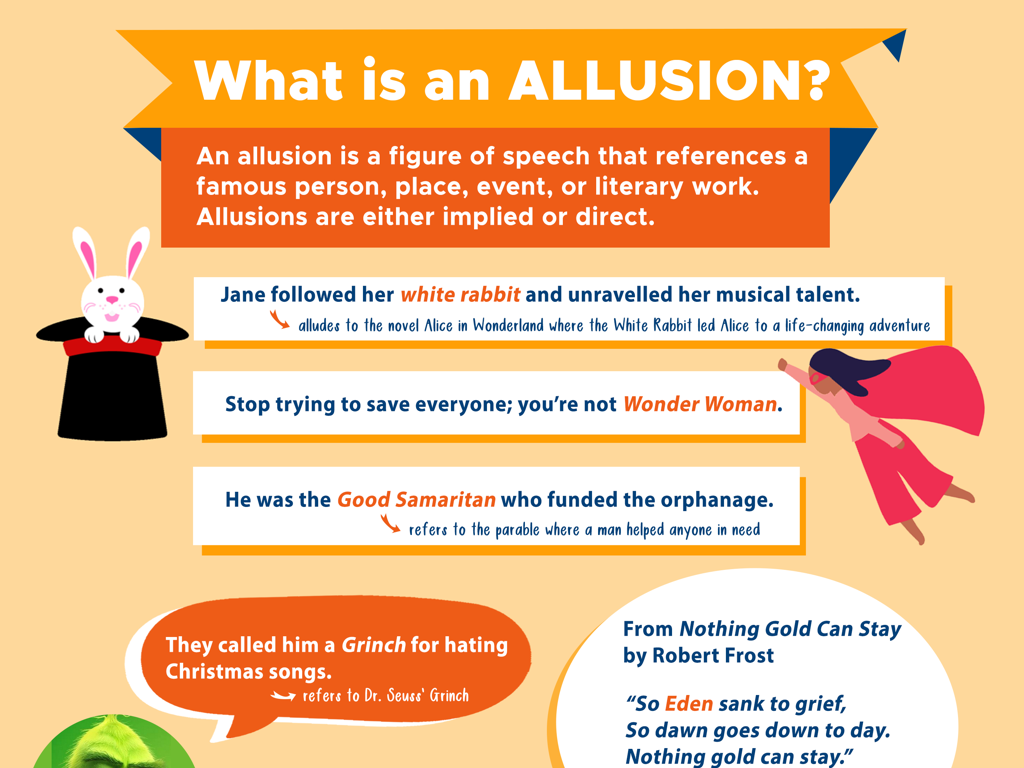Fact Families - Up To 10
Subject: Math
Grade: First grade
Topic: Addition And Subtraction Up To 10
Please LOG IN to download the presentation. Access is available to registered users only.
View More Content
Welcome to Fact Families!
– Learning about Fact Families
– Numbers related in a family
– Numbers that are close like 2, 3, and 5 are a family
– Fact families and addition
– If we have 2 and 3, we can add them to make 5
– Fact families and subtraction
– Knowing 2 and 3 make 5 helps us subtract to find the other number
|
This slide introduces the concept of fact families, which is a fundamental part of understanding the relationship between addition and subtraction. Explain to the students that just like people in a family are related, numbers in a fact family are related too. Use simple examples to show how two smaller numbers add up to make a bigger number, and how knowing the total and one of the smaller numbers helps us find the other number through subtraction. Encourage the students to think of their own number families where the numbers add up to 10 or less. This will help them see the inverse relationship between addition and subtraction, making future math problems easier to solve.
Exploring Fact Families
– What is a fact family?
– A set of related addition and subtraction facts using the same numbers
– Example with 2, 4, and 6
– 2+4=6, 4+2=6, 6-2=4, 6-4=2 show how they are connected
– Adding numbers in a family
– We can add smaller numbers to make the biggest number
– Subtracting numbers in a family
– We can subtract to find the smaller numbers
|
Introduce the concept of fact families by explaining that they are groups of math facts that are connected through the same numbers. Use the numbers 2, 4, and 6 as an example to show how these numbers can be added or subtracted to get one another. Emphasize that in a fact family, you can add the two smaller numbers to get the largest number, and you can subtract one number from the largest to get the other number. Encourage students to think of fact families as ‘families’ where the numbers work together and support each other. Provide additional examples and practice opportunities to help students become comfortable with identifying and creating fact families up to 10.
Addition in Fact Families
– Add small numbers to make a big number
– Example: 2 + 4 equals 6
– Combining 2 and 4 makes 6
– Practice addition with examples
– Let’s solve 3 + 5 and 1 + 6 together
– Understand addition in families
– See how numbers relate in addition
|
This slide introduces the concept of addition within fact families, which is a foundational math skill for first graders. Start by explaining that adding two smaller numbers together gives us a larger number. Use simple examples like 2 + 4 = 6 to illustrate this point. Encourage the students to practice addition by trying out similar problems together as a class. Help them understand that numbers in a fact family are related and show how changing the order of numbers in addition doesn’t change the sum. For the activity, have students work on a few problems in pairs or small groups, and then share their answers with the class to reinforce the concept.
Subtraction in Fact Families
– Subtract small from big numbers
– Example: 6 – 2 equals 4
– If we have 6 apples and take away 2, we have 4 left.
– Your turn to practice subtraction!
– Remember, we can’t subtract a bigger number from a smaller one!
– Trying to take 5 from 3 doesn’t work in our number family!
|
This slide introduces the concept of subtraction within fact families, focusing on the principle that a smaller number is subtracted from a larger one. Use the example provided to illustrate this concept clearly. Encourage students to think of subtraction as ‘taking away’ and ensure they understand that the larger number must come first in this scenario. For the activity, provide several examples for the students to work on, such as 7 – 3, 9 – 5, and 10 – 6. Monitor the class as they try these examples, and correct any misconceptions, such as attempting to subtract a larger number from a smaller one. Reinforce the idea that in fact families, numbers work together in different ways, and subtraction is just one of those ways.
Creating Our Own Fact Families
– Pick three numbers within 10
– Numbers that add up to 10 or less
– Write addition and subtraction facts
– Example: 2, 4, 6 can make 2+4=6 and 6-2=4
– Share your fact family
– Tell the class how you made your family
|
This slide introduces an interactive class activity where students will create their own fact families using numbers up to 10. Guide the students to choose any three numbers that add up to 10 or less and write down all the possible addition and subtraction facts that connect these numbers. For example, if a student picks 2, 4, and 6, they would write 2+4=6, 4+2=6, 6-2=4, and 6-4=2. Encourage creativity and ensure they understand that a fact family consists of at least two addition and two subtraction facts. After they have written their facts, ask them to share with the class how they created their fact family. This activity helps reinforce the relationship between addition and subtraction and the concept of inverse operations.
Fact Family Practice
– Practice with examples
– We’ll solve examples as a class
– Fill out a worksheet
– Each student gets a worksheet with numbers up to 10
– Understand fact families
– Fact families show how numbers are related in addition and subtraction
– Practice leads to perfection
|
This slide is aimed at reinforcing the concept of fact families through practice. Start by solving a few examples together as a class to demonstrate how numbers in a fact family are connected through addition and subtraction. Distribute a worksheet to each student with simple fact families that involve numbers up to 10. Encourage students to recognize the patterns in the numbers and how they can be combined or separated to form different equations. Emphasize that regular practice will help them become more confident in identifying and using fact families. Provide assistance as needed and praise efforts to foster a positive learning environment.
Class Activity: Fact Family House Craft
– Create your fact family house
– Fill in your house with numbers
– Use numbers 0-10 to make addition and subtraction families
– Decorate your house
– Use colors and stickers to make it unique
– Share your house with the class
|
This activity is designed to help students understand the concept of fact families within the numbers 0-10. Each student will receive a house template where they will fill in different numbers that make up a fact family. For example, using the numbers 3, 7, and 10, they can write the related addition and subtraction facts: 3+7=10, 7+3=10, 10-7=3, and 10-3=7. Encourage creativity in decorating their houses to make the activity enjoyable. After completing their houses, students will share their fact families with the class, reinforcing their understanding through teaching their peers. Prepare additional templates for students who may need more practice and consider pairing students to foster collaboration.
Fact Families Review
– Fact families are number groups
– Numbers in a family are related
– Like relatives, they work together in math problems
– Practice addition and subtraction
– Use fact families to add and subtract within 10
– Keep learning at home!
|
This slide is meant to conclude the lesson on fact families and to reinforce the key concepts learned. Fact families are sets of related math facts that involve the same numbers. For example, in the fact family of 2, 4, and 6, the related facts are 2+4=6, 4+2=6, 6-2=4, and 6-4=2. Encourage the students to continue practicing their addition and subtraction skills at home using the concept of fact families. Provide examples of simple fact families that they can work on and remind them that understanding the relationship between numbers in a fact family can make solving math problems easier. The goal is to ensure that students are comfortable with the idea of fact families and can use them as a tool to check their work.

